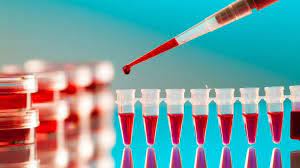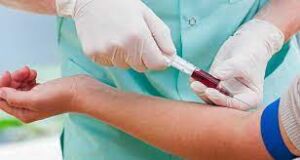Blood Test Information: Types, Preparation, and What to Expect
Blood is an essential part of life. It is the vital fluid that transports oxygen and other important nutrients, hormones, and antibodies around the body. Blood also helps to protect us from infection by carrying specialized cells that fight disease and foreign bodies. Blood isn’t just composed of liquid though; it has different components including red blood cells, white blood cells, platelets, plasma and other substances that can help us understand overall health. Not only does blood circulate throughout our bodies providing essential nutrients but it also plays a role in regulating body temperature and pH balance, as well as acting as a buffer against physical shocks or changes in pressure.
A blood test is a medical procedure that involves taking a sample of blood from a patient to analyze its components. This type of testing allows doctors to investigate the levels of various hormones, proteins, electrolytes, and other substances in the bloodstream. Blood tests are used to detect abnormalities in these substances as well as diagnose and monitor many types of diseases or conditions such as cancer, diabetes, anemia, and liver disease. Blood tests can also be used to measure drug levels and check for evidence of infection or exposure to toxins or allergens. The results from a blood test can provide important information about an individual’s overall health status and help guide treatments. Please keep reading for details on the following topics:
Importance of blood tests
What to expect before a blood test
What to expect during a blood test
Tips to help cope during a blood draw
What to expect after a blood test
Side effects of blood draws

BLOOD TESTS HELP
Check the function of the organs
Identify causes of illnesses
Determine whether one is at risk of diseases
Determine whether medications are helping treat the illness
Determine how long it takes for the blood to clot
WHAT TO EXPECT BEFORE BLOOD TESTS
One may be required to fast for about 8 -12 hours before having the test done
Before a blood draw, find out if there are any special instructions to follow
Wear a short-sleeved shirt or layers
Stopping taking aspirin at least two days before your blood draw if donating platelets
WHAT TO EXPECT DURING THE BLOOD TEST

A band will be applied around the arm to expose the vein
A vein will be selected on the arm to collect the blood sample
The skin over the vein being used will be cleaned with an antiseptic wipe
A pinch will be felt as the needle penetrates the skin
The blood sample can be collected and placed into a specimen tube
After the sample has been taken, one will be asked to release the fist and the band will be removed
The needle will be withdrawn from the skin and pressure applied to the site
A dressing will be applied to the puncture site and instructions regarding removal time will be given
The fist will be released and the band removed
After the sample has been taken, one will be asked to release the fist, and the band will be removed
WAYS TO REMAIN CALM DURING A BLOOD DRAW
Focus on taking deep, full breaths to relieve mental tension and naturally relax the body
Listen to music before and during the draw to block out an environment that might otherwise make one feel nervous
Look away to avoid moving
Ask if there are devices or methods the person drawing blood can use to minimize discomfort for example, some facilities will use numbing creams or small lidocaine injections (a local anesthetic) before inserting a needle into the vein. This can help minimize discomfort
THINGS TO EXPECT AFTER A BLOOD DRAW
A piece of cotton will be placed on the site and pressure will be applied for about 2 minutes, followed by a bandage, to help minimize bleeding and swelling
Keep the bandage on for least four to six hours or longer if taking blood-thinning medications
Refrain from doing any vigorous exercise, which could stimulate blood flow and may cause bleeding from the site
Eat foods rich in iron, such as leafy green vegetables or iron-fortified cereals to help replenish lost iron stores and build blood supply back up
Apply a cloth-covered ice pack to the arm or hand if having soreness or bruising at the puncture site
Snack on energy-boosting foods, such as cheese and crackers and a handful of nuts, or half of a turkey sandwich
Follow up with the Lab or doctor for the results
If experiencing any worrisome symptoms seek medical advice
SIDE EFFECTS OF BLOOD DRAWS
Bruising
Lightheadedness
Skin irritation from tape or adhesive from an applied bandage
Soreness
Disclaimer: The information provided in this content is for general informational purposes only. It is not intended as medical or healthcare advice, diagnosis, or treatment. Always seek the advice of a qualified healthcare professional with any questions you may have regarding a medical condition or healthcare decisions.

